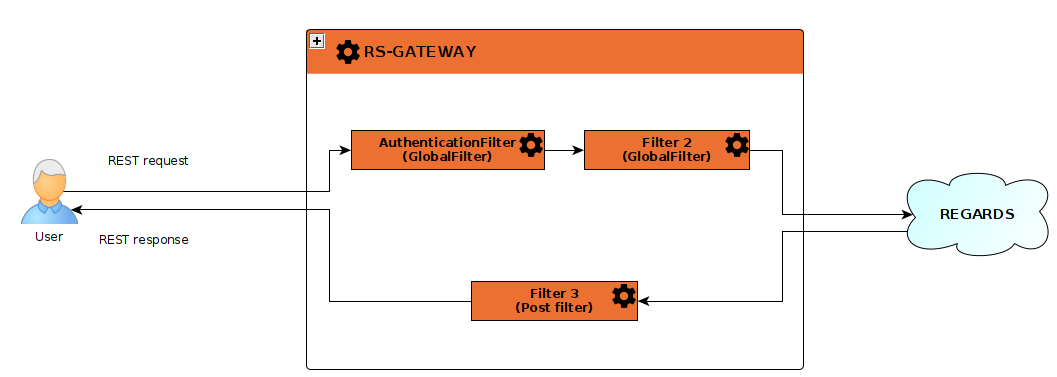Gateway microservice conception
Introduction
Gateway microservice uses Spring Cloud Gateway concept.
Clients send requests to REGARDS. If the Gateway Handler Mapping identifies that a request matches a route, it is forwarded to the Gateway Web Handler. The handler processes the request by passing it through a filter chain specific to the request. All the 'pre' filter logic is executed first, and then the request is routed to service destination. Once this request is sent and a response is received, the 'post' filter logic is executed.

Filters
REGARDS has implemented few filters for security, REGARDS authentication (internal or external authentication), and monitoring REST requests. As explained in the upper section, these filters are called one by one (with a specified order). These filters can add informations, like user informations, in the request headers.
Several other filters are implemented by spring. Check them here
Route
The routing is configured in rs-gateway.properties file inside rs-config microservice. It explains how the gateway have to redirect requests after the filters has been exectued. This file also contains CORS informations, and REST response timeout.
A classic REGARDS endpoint url respects the pattern :
{PROTOCOL}://{HOST}/{PATH_PREFIX}/{MICROSERVICE_NAME}/{ENDPOINT_PATH}
example:
https://validation-regards.cloud-espace.si.c-s.fr/api/v1/rs-authentication/oauth/token?scope=validation_1_16' \
This url contains two prefixes
- PATH_PREFIX : api/v1 : permit to have multiple API version. For now, only a V1 exists.
- MICROSERVICE : rs-authentication : the microservice name
Gateway makes a call to rs-registry microservice to know which instance of the microservice send the request (this concept is called load-balancing).